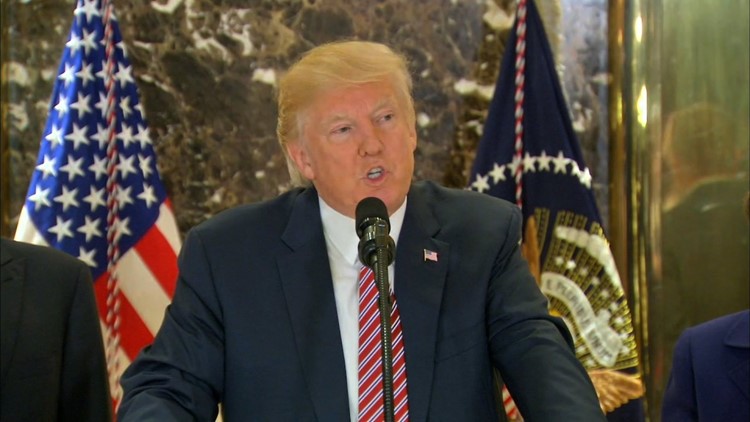President Donald Trump on Monday laid out goals for the war in Afghanistan, saying he will not announce dates or troop levels but “from now on victory will have a clear definition.”
In a primetime speech, Trump said those objectives will include “obliterating ISIS” and “preventing the Taliban from taking over Afghanistan.” To achieve these goals, Trump said he would expand authority for the US to target criminal and terrorist networks in Afghanistan.
Still, Trump warned that he was not offering a blank check of US support to Afghanistan, insisting that the country will have to continue to show a serious commitment and make strides toward addressing persistent issues like corruption.
“Our patience is not unlimited. We will keep our eyes wide open,” Trump promised.
Trump opened his speech by addressing wounds and divisions at home in another attempt to clean up his response to Charlottesville.
Without specifically mentioning the violence in Virginia, the President urged Americans to unite and pointed to US servicemembers as an example of transcending racial, ethnic and other divisions in American society.
“They’re all part of the same family. It’s called the American family. They take the same oath, fight for the same flag and live according to the same law. They are bound together by common purpose, mutual trust and selfless devotion to our nation and to each other,” Trump said.
Trump added: “Love for America requires love for all its people. When we open our hearts to patriotism, there is no room for prejudice, no tolerance for bigotry.”
“We cannot remain a force for peace in the world if we are not at peace with each other.”
The speech comes as Trump becomes the third US president to put his imprint on the 16-year war in Afghanistan, as he reveals his plans to shape the future of the American war effort and broader regional strategy.
Trump said a rapid withdrawal from Afghanistan is not feasible, pointing to the lessons the US learned from Iraq, where a vacuum allowed ISIS to grow in the wake of the American withdrawal from that country.
“The consequences of a rapid exit are both predictable and unacceptable,” Trump said. “We cannot repeat in Afghanistan the mistake we made Iraq.”
Trump drew on his characteristically blunt language as he talked about the terrorists the US is confronting in Afghanistan and around the world and vowed the US will “defeat them handily.”
“They are nothing but thugs and criminals and predators and, that’s right, losers,” Trump said. “We will defeat them and defeat them handily.”
Trump was explicit in saying he will not announce dates of military operations in advance. Trump went on to say he will not discuss troop levels or further plans for military activities, echoing a promise he made on the campaign trail.
“I will not say when we are going to attack, but attack we will,” Trump said.
The address at Joint Base Myer-Henderson Hall, a US military base adjacent to Arlington National Cemetery, is the most significant national security speech of Trump’s presidency to date and will reflect the outcome of months of internal administration deliberations to decide the scope of the ongoing military, financial and diplomatic commitment to the longest-running war in US history.
Trump has previously expressed reservations about the seemingly endless US military commitment in Afghanistan and questioned the objectives of staying there.
Trump’s decision comes as Taliban militants have been resurgent in recent months, posting a series of recent gains against Afghan government forces, which are backed by a US-led coalition of NATO allies. ISIS, through a regional affiliate known as ISIS-K, has also established a foothold in Afghanistan in recent years, carrying out a series of deadly terrorist attacks and coordinating assaults with the Taliban.
About 8,400 US troops are currently deployed to Afghanistan. The majority — about 6,900 — are assigned to the NATO mission to train and advise Afghan security forces alongside approximately 6,000 troops from other NATO countries. The remainder of US forces in Afghanistan carry out counterterrorism missions in the country.
The US officially ended its combat mission in Afghanistan in December 2014 and shifted its mission to focus on counterterrorism operations and training Afghan forces. But President Barack Obama never managed the full complete withdrawal of US forces that he had sought during his time in office.
The Trump administration, though, has been looking beyond troop numbers, mulling a readjustment of the US’s objectives — evaluating everything from its support for a centralized Afghan government to its metrics for success in fighting the Taliban and ISIS-K.
The administration has also been developing a strategy to address the growing Iranian influence in Afghanistan and to crack down on terror networks in neighboring Pakistan.



